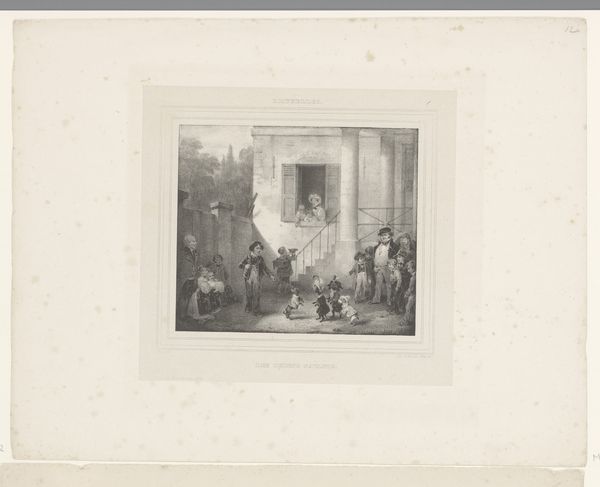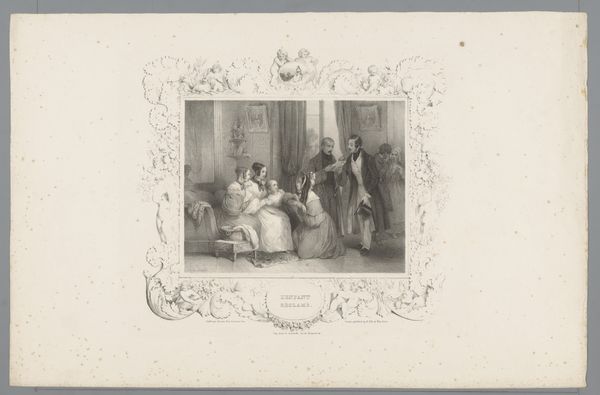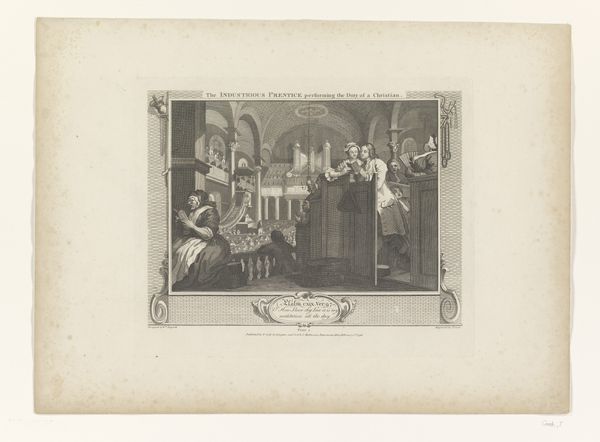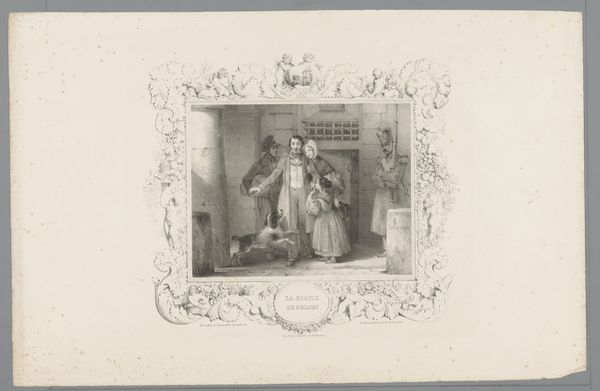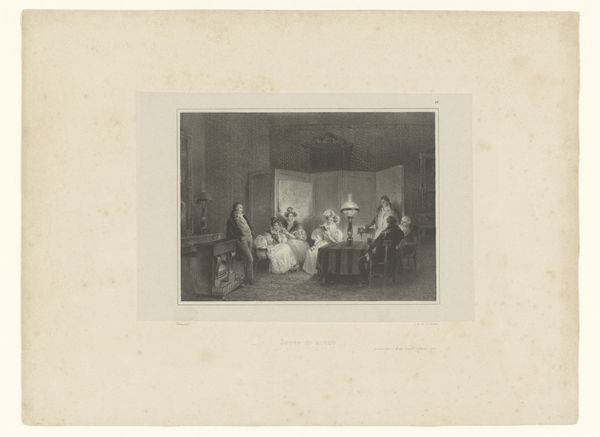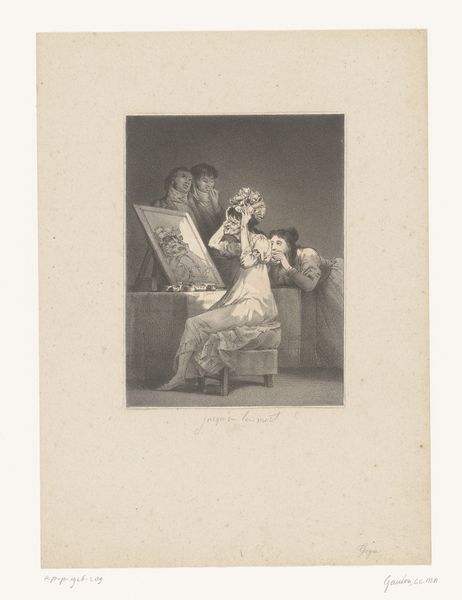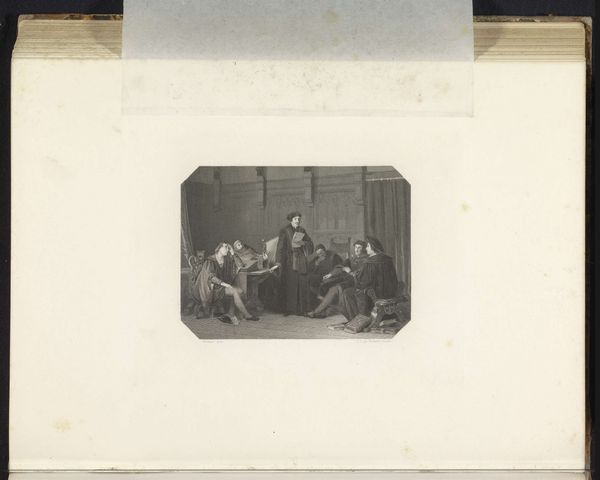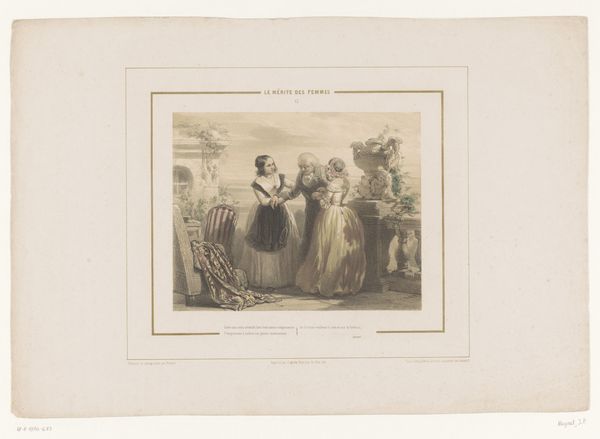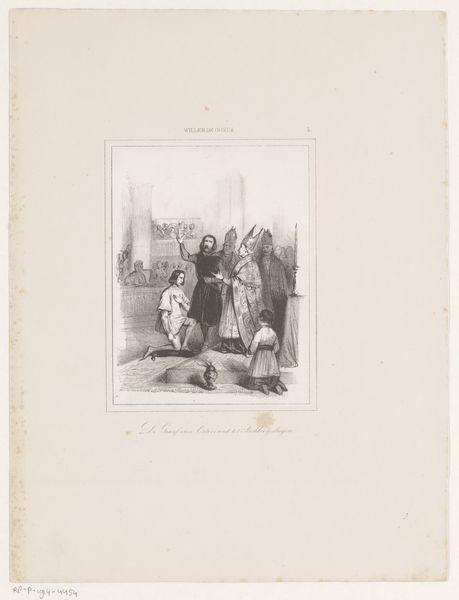
print, engraving
# print
#
genre-painting
#
history-painting
#
academic-art
#
engraving
#
realism
Dimensions: height 275 mm, width 362 mm
Copyright: Rijks Museum: Open Domain
Curator: So, what's your first impression looking at Carel Christiaan Antony Last's "Visit to a Minister?" This print, residing here at the Rijksmuseum, was created sometime between 1843 and 1876. Editor: Well, immediately, I notice a stark contrast between the solemnity of the clergyman and the supplicant kneeling before him. There’s this air of formalized respect, but also a potential critique of social hierarchy. Curator: Interesting! The academic art style employed offers us a realistic portrayal of a genre scene—a slice of 19th-century life centered on faith, tradition, and maybe a bit of… well, let’s call it societal expectation. It seems the whole family of the Minister, mother and sisters, perhaps brother in law, came to welcome or greet this visit to the preacher's home. Editor: Indeed. Structurally, Last uses the columns and archways to frame the figures, directing our eye toward this interaction, which feels meticulously staged. Semiotically, the robes signify authority while the act of kneeling could signify contrition or seeking absolution. Curator: Or perhaps simply respect? I see it more as an examination of moral duty intertwined with ordinary lives. The artist seems keen to capture realism as social document and human story. Editor: Perhaps. But Last’s choice to portray this specific moment hints at more. I’m compelled to wonder about what the artist tried to suggest through carefully choosing a moment when this scene is enacted and played out within a carefully calculated structure. Curator: Right! These stark black-and-white contrasts enhance the drama—or are you arguing that his focus might be about power? A silent dialogue happening among members from this religious community. Editor: Absolutely, both artistically and theoretically! These kind of pieces give the interpreter opportunities to reflect on those structures with all their embedded codes—almost, how about, an early photo, where posture speaks everything. Curator: True! It certainly holds more than one lens to examine social fabrics or structures of life, beliefs. Thank you for that insight! Editor: Thank you! Thinking more about art is always so rewarding, is it not?
Comments
No comments
Be the first to comment and join the conversation on the ultimate creative platform.

